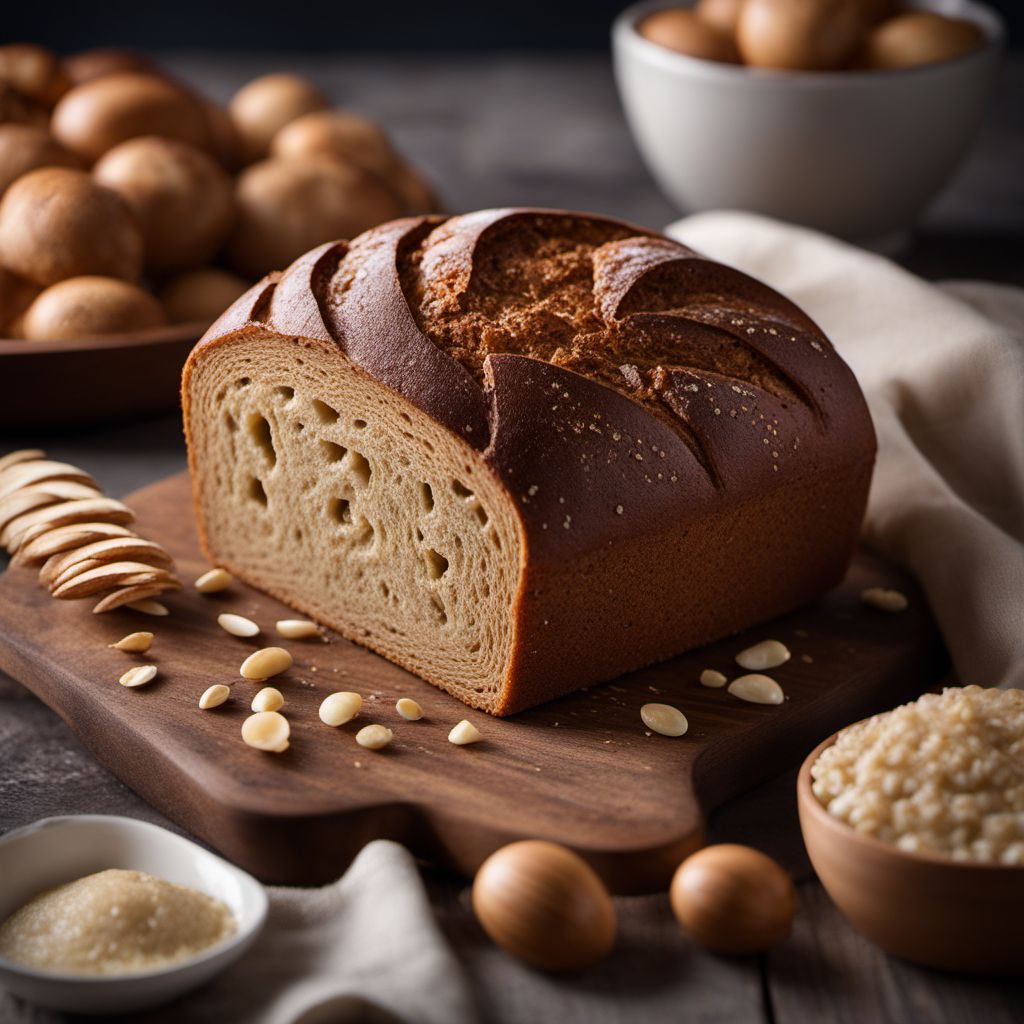
Ingredient
Rye only bread and rolls
"The Wholesome Delight: Exploring the World of Rye-Infused Breads and Rolls"
Rye only bread and rolls are made primarily from rye flour, which gives them a dense and chewy texture. The use of rye flour also imparts a slightly sweet and nutty flavor to the bread, making it a favorite among those who appreciate a more robust taste. The color of rye bread can range from light to dark, depending on the type of rye flour used. The crust is typically firm and crisp, while the interior remains moist and tender. Rye bread and rolls are often denser than their wheat counterparts, making them a filling and satisfying choice.
Origins and history
Rye has been cultivated for centuries and has played a significant role in the diets of many European countries, particularly in Northern and Eastern Europe. It was one of the primary grains grown in these regions due to its ability to thrive in colder climates and poorer soil conditions. Rye bread has a long history, dating back to ancient times when it was a staple food for peasants and farmers. It was valued for its ability to provide sustenance and nourishment, even in harsh conditions. Today, rye bread and rolls continue to be enjoyed in various forms across the globe, with each region adding its own unique twist to the traditional recipe.
Nutritional information
Rye only bread and rolls are a good source of dietary fiber, providing approximately X grams per serving. They also contain essential minerals such as iron, magnesium, and zinc. Additionally, rye bread is lower in gluten compared to wheat bread, making it a suitable option for individuals with gluten sensitivities.
Allergens
Rye contains gluten, so individuals with gluten allergies or sensitivities should avoid rye only bread and rolls.
How to select
When selecting rye only bread and rolls, look for loaves or rolls that have a firm crust and a moist, springy interior. Avoid bread that feels overly dense or dry. Freshly baked rye bread should have a pleasant aroma and a slightly sweet, nutty scent. If purchasing from a bakery, ask about the ingredients used and opt for bread made with whole grain rye flour for added nutritional benefits.
Storage recommendations
To maintain the freshness and quality of rye only bread and rolls, store them in a cool, dry place, preferably in a bread box or a paper bag. Avoid storing them in plastic bags, as this can cause moisture buildup and lead to mold growth. Rye bread and rolls can also be frozen for longer-term storage. Slice the bread before freezing and place parchment paper between each slice to prevent them from sticking together. Thaw frozen bread at room temperature or in a toaster oven for best results.
How to produce
Growing rye requires specific climate conditions, including cool temperatures and well-drained soil. However, for those interested in baking their own rye bread and rolls, there are numerous recipes available that provide step-by-step instructions on how to make the dough, proof it, and bake it to perfection.
Preparation tips
Rye only bread and rolls can be enjoyed in various ways. They are perfect for sandwiches, as their dense texture holds up well to fillings. Try pairing them with smoked salmon, pickles, and cream cheese for a classic Scandinavian open-faced sandwich. Rye bread also makes a delicious base for avocado toast, topped with sliced tomatoes and a sprinkle of sea salt. For a warm and comforting treat, toast rye bread and serve it alongside a bowl of hearty soup or stew.
Substitutions
If rye only bread and rolls are not available, you can substitute them with whole wheat bread or rolls for a similar texture and nutritional profile.
Culinary uses
Rye only bread and rolls are commonly used in traditional dishes such as Reuben sandwiches, pastrami on rye, and smørrebrød. They are also a popular choice for serving with hearty soups, stews, and charcuterie boards.
Availability
Rye only bread and rolls are commonly available in regions with a strong European culinary influence, such as Scandinavia, Germany, and Eastern Europe. They can also be found in specialty bakeries or gourmet grocery stores in other parts of the world.





